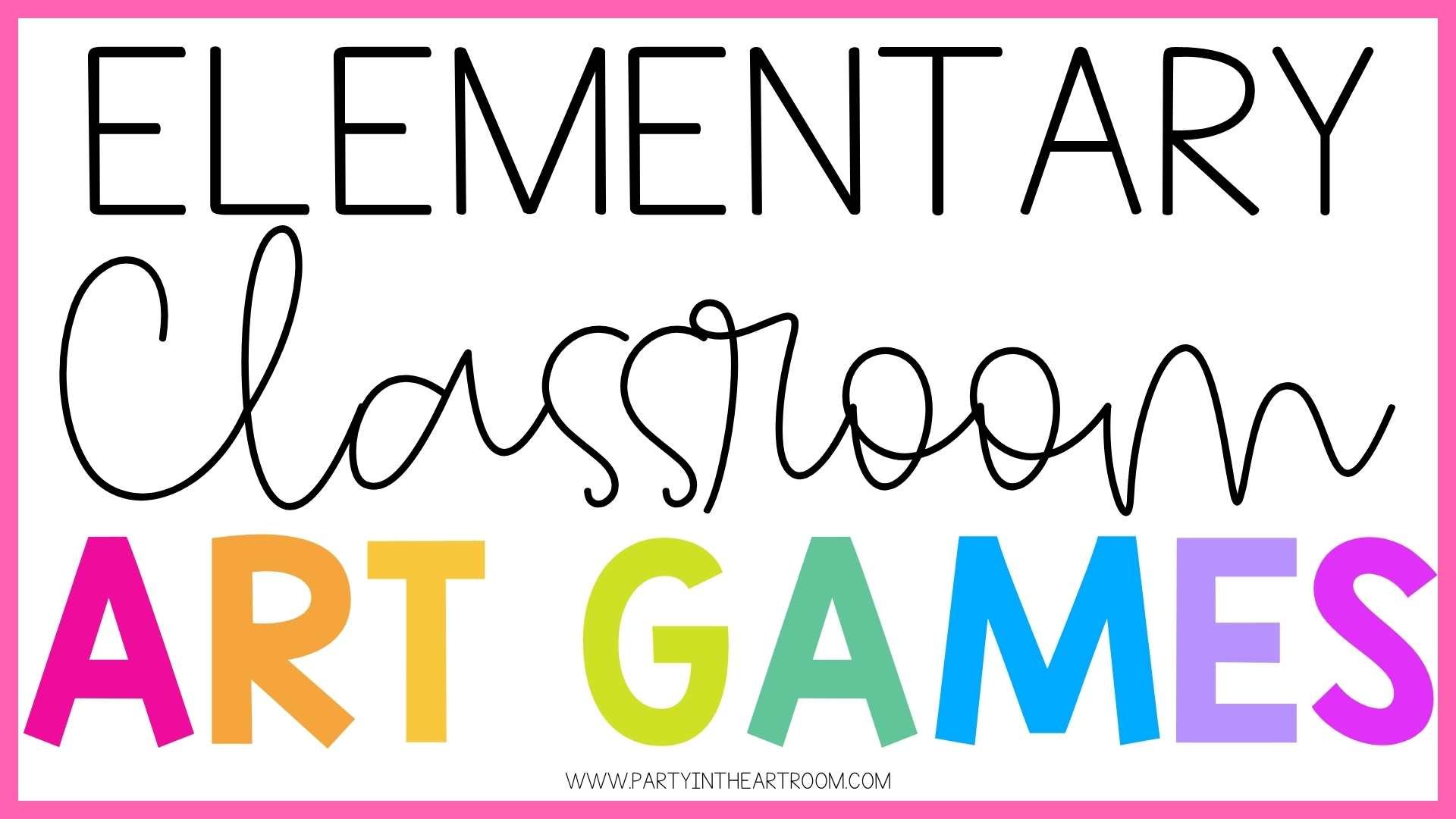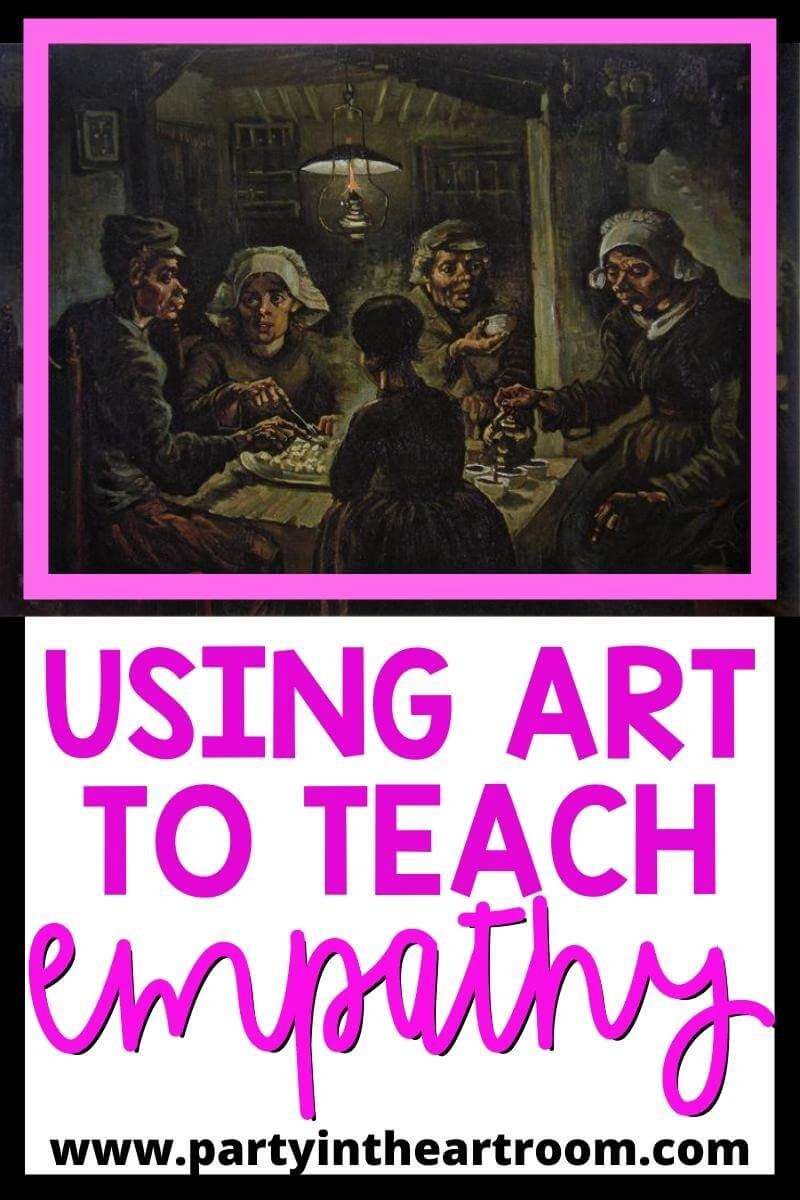3 Dynamic Art Games for the Classroom That Elementary Students Will Love
Ever wondered how to infuse joy and collaboration into your classroom through art, whether you're a general education teacher or an art teacher?
Well, let me share a little secret from my own teaching experience.
As someone who has taught both general education and art classes, I've discovered that incorporating art class games into any classroom can make learning engaging and incredibly fun.
So, are you ready to embark on a journey of imagination and discovery with your students? Join me as we explore three captivating art games for elementary students that will transform your classroom into a vibrant hub of creativity and collaboration.
Creative Collage Challenge: A Collaborative Alphabet Adventure
The Creative Collage Challenge is one of my students’ favorite ways to collaborate using art class games.
In this super fun game, students venture on an artistic journey through the alphabet.
3 Easy Steps to this Art Class Game
Set a category, such as "food," and task students with drawing one item that starts with each letter of the alphabet within the given category. To add an element of excitement, set a timer for five minutes, encouraging quick sketches with a splash of color. (This is a great way to use up old markers or crayons since students are just splashing color. They don’t need the best, newest supplies out for this!)
Cut or tear their drawings into individual pieces. Perfection isn't the goal here—rough cuts add to the charm and spontaneity of the process. Even if they accidentally rip something in half, it can still be used in the collage process. (This is like practicing for how to react to events that could take place in real life. Say they are working on their Spring Art Show piece and it accidentally rips, they can have experience with handling that and making artistic choices around the best ways to solve that problem.)
Have everyone contribute their pieces to a communal pile. There’s something mysterious about this and it is what makes art fun when you’re using this art class game. Mix up all the pieces, and have each student randomly select 26 pieces from the pile. They should not get many of their own pieces back. (This is a great way to start building community in the classroom and to model how everyone can contribute to something bigger than their individual ideals.)
From here, they can work independently to build a collage or collaborate with their peers to assemble a captivating collage. As they arrange and rearrange the pieces, they infuse the collage with color, texture, and narrative, resulting in a fun piece born from collective imagination using simple art games for the classroom. (No need to have them glue their pieces to another sheet of paper unless they just want to. This is a great way to teach the concept of impermanence in art.)
An alternative way to play this art class game is to print a bunch of small images of items that fit into the categories you’re going to use. The students can still cut them out and contribute them all to the same pile, etc. This lets them focus on the collage component more than the drawing component of the art class game. This method can also help focus on learning about composition while removing the pressure of drawing.
Mandala Relay: Focusing on Radial Symmetry
Engage in a harmonious exploration of symmetry and pattern with the Mandala Relay. I say “harmonious” because one of the best ways to teach the concept of harmony in art is to explore symmetry.
In this art class game, teams of students construct a larger-scale mandala. Armed with solid-colored items, such as large pieces of torn paper, they take turns laying down pieces on the floor to build their mandala.
The beauty of this game lies in its emphasis on radial symmetry and teamwork. As students layer pieces, they weave intricate patterns and designs, embracing creativity without constraints. Encourage them to experiment with shapes, colors, and arrangements, fostering a sense of collective ownership over the evolving mandala.
With each contribution, students celebrate the power of collaboration and artistic expression, culminating in a breathtaking mandala that reflects their collective vision and creativity.
Here’s What You Do:
Begin by emphasizing the concept of harmony in art, as it plays a crucial role in understanding symmetry.
Divide students into teams and provide them with solid-colored items, such as large pieces of torn paper. Each team will collaboratively construct a larger-scale mandala, taking turns laying down pieces on the floor.
Encourage students to layer pieces to create intricate patterns and designs. This emphasis on symmetry fosters creativity without constraints, allowing students to experiment with shapes, colors, and arrangements.
Rad Robot: Dice Roll Art Class Game
With minimal preparation required, the Rad Robot: Dice Roll Art Class Game serves as an exciting activity suitable for various educational settings, from visual art classrooms to math classes seeking symmetry-based art games for elementary students. The symmetry is built into the body style of the robot. It is easy to have students identify lines of symmetry using the robot. Plus, it’s a different spin on what we normally use to model symmetry for our students.
Because the drawing prompt for this art class game is built around rolling a dice, it also works really well if you are introducing the concept of probability.
3 Simple Steps:
Roll and Create: Students roll the dice to unveil their artistic prompts, each representing a unique aspect of robot design. From mechanical limbs to futuristic gadgets, the possibilities are endless. Armed with creativity and a dash of technological inspiration, students unleash their imaginations as they bring their robotic visions to life on paper.
Craft and Design: With their prompts in hand, students dive into the creative process, sketching and embellishing their robot designs with intricate details and vibrant colors. This phase encourages students to explore artistic techniques while honing their literacy skills as they articulate the features and functions of their robotic creations. This is what makes art fun for students. They will easily get the artwork started using the roll and create step. Then, they can add their own creative ideas. It really scaffolds the artistic process so they can be most successful.
Share and Showcase: As the final stage approaches, students proudly showcase their robot artworks, celebrating the culmination of their collaborative efforts. Whether displayed in the classroom gallery or shared with peers during a gallery walk, these robot masterpieces serve as testaments to creativity, innovation, and the power of artistic expression. Through this dice roll art class game, students not only engage in artistic exploration but also cultivate critical thinking and problem solving.
Final Thoughts
In any elementary classroom these classroom art games offer interactive experiences to foster collaboration, creativity, and a deep appreciation for the artistic process. As students immerse themselves in collaborative ventures, they not only hone their artistic skills but also forge lasting bonds and memories that transcend the confines of the classroom.
As you guide your students through these captivating experiences, cherish the moments of discovery and inspiration that unfold, knowing that each brushstroke and collaboration leaves an indelible mark on their artistic journey.
Through engaging art class games like the ones mentioned above, we not only nurture their creative talents but also foster essential skills such as collaboration, problem-solving, and critical thinking.
Let us continue to celebrate the joy of artistic expression and inspire our students to explore the boundless possibilities of their imagination.
I’m Amanda, and I align standards and integrate content to help teachers meet the needs of the Whole Child in art class! I have yet to find a standard that I couldn’t teach through art, and I want to share it all with you.
Not sure where to start with bringing art and content together? This freebie guide is packed with 25 ideas to align your art lessons with math and ELA standards. Your students will be crafting art and practicing algebraic thinking. Win-win!
I want all students to feel successful in the art room, so I created a standards-based Daffodil Collage lesson to do just that! The lesson includes an artist study, student reflection, and more, so push your artists to their full potential.









